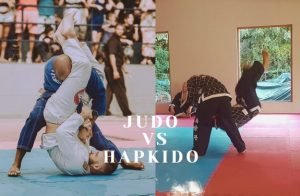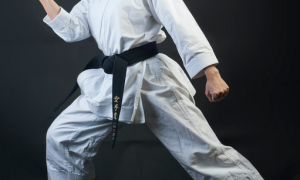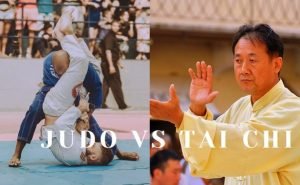
Martial arts have become hugely popular worldwide, with millions practicing disciplines like karate, taekwondo, and jiu-jitsu. Among the most prominent styles are Judo and Hapkido. This article will compare and contrast these two martial arts, pinning Judo vs Hapkido by analyzing their history, techniques, philosophy, and practical applications. Understanding the differences can help determine which style may suit an individual best for sport, self-defense, or personal growth.
Table of Contents
Toggle![]()
Judo vs Hapkido: an Overview
Hapkido and Judo are distinct martial arts with rich histories and unique techniques.
Judo: Judo was founded in 1882 by Japanese educator Jigoro Kano and is primarily centered around throws, takedowns, and ground fighting. Practitioners wear sturdy uniforms called judogi and aim to use their opponent’s force against them, adhering to the principle known as “maximum efficiency, minimum effort” or jita kyoei. Training methods in Judo emphasize uchi-komi, which involves the repetition of throwing techniques, along with randori, a form of freestyle practice, and kata, which are structured forms or patterns.
Hapkido: Originating in Korea around 1950 through the teachings of Choi Yong-sul, Hapkido is a martial art that integrates a wide range of techniques, including joint locks, pressure points, throws, kicks, and hand strikes. The central philosophy of Hapkido revolves around achieving harmony and energy, allowing practitioners to use an aggressor’s force to their advantage. Unlike Judo, Hapkido students typically wear comfortable loose-fitting clothing and engage in training that encompasses wrist locks, circular kicks, cane techniques, and methods for controlled falling.
Both martial arts prioritize efficiency and the strategic use of an opponent’s strength, but they differ significantly in their historical roots, training methods, and techniques.
![]()
Judo vs Hapkido: Similarities
1. Origin in Japan
Both Hapkido and Judo trace their roots back to Japan, which is often considered the birthplace of martial arts.
2. Focus on Self-Defense
While they have different approaches, both Hapkido and Judo emphasize practical self-defense techniques. Practitioners learn how to defend themselves in real-life situations.
3. Utilization of Joint Locks
Both martial arts incorporate joint locks as a core component of their techniques. These locks are used to immobilize or control an opponent by manipulating their joints.
4. Throwing Techniques
Judo and Hapkido practitioners develop proficient throwing techniques. However, the methods and objectives behind these throws differ, which we’ll explore further in the differences section.
5. Grappling and Groundwork
Both martial arts include elements of grappling and groundwork, but the focus and tactics vary.
![]()
Judo vs Hapkido: Differences
1. Philosophical and Historical Differences
- Judo: Founded by Jigoro Kano in the late 19th century, Judo is often seen as a sport with a strong emphasis on discipline, mutual respect, and the concept of “maximum efficiency with minimum effort.” It promotes the idea of using an opponent’s force against them.
- Hapkido: Hapkido is a Korean martial art that combines elements of various Asian fighting styles, including Japanese Jujutsu. It is known for its comprehensive approach to self-defense, encompassing strikes, kicks, and weapons techniques. It places a significant emphasis on fluidity and adaptability in combat.
2. Striking Techniques
- Judo: Judo primarily focuses on throws, pins, and joint locks, with limited striking techniques. Strikes are not a central aspect of Judo training.
- Hapkido: Hapkido incorporates a wider range of striking techniques, including punches, kicks, and strikes with various parts of the body. This makes it more versatile in stand-up combat situations.
3. Competitive Aspect
- Judo: Judo is a competitive sport with standardized rules and competitions held worldwide. It is practiced in a controlled environment with the goal of throwing or pinning an opponent to score points or achieve an ippon (full point).
- Hapkido: Hapkido is less structured in terms of competitive sport. While there are Hapkido competitions, they are not as widespread or standardized as Judo tournaments.
4. Uniforms
- Judo: Practitioners wear a traditional judogi (judo uniform), which consists of a white jacket and pants with a belt that signifies their rank.
- Hapkido: Hapkido practitioners may wear a uniform similar to a gi but often have variations in uniform styles and colors depending on the school.
5. Belt Systems
Both Hapkido and Judo have belt systems to denote rank and proficiency, but their belt colors and ranking structures can differ.
Here’s a simplified table summarizing the key differences:
| Aspect | Judo | Hapkido |
|---|---|---|
| Origin | Japan | Korea |
| Philosophy | Maximum efficiency, discipline | Versatile self-defense |
| Striking Techniques | Limited | Extensive |
| Competitions | Yes (common) | Yes (less common) |
| Uniform | Judogi (white) | Gi (varies) |
| Belt System | Colored belts | Colored belts |
In conclusion, Hapkido and Judo, while both originating in Japan and sharing some common elements, have distinct philosophies and approaches to martial arts. Your choice between the two should depend on your goals, interests, and preferred style of combat, whether it’s the controlled throws and pins of Judo or the versatile self-defense techniques of Hapkido.
![]()
Which is Better – Judo or Hapkido?
There is no definitive answer on whether Judo or Hapkido is better overall. The choice depends entirely on an individual’s specific goals and needs. For those interested in Olympic-level sport, Judo may be preferential with its formal competitive framework. For practical self-defense skills, Hapkido’s versatility could be more advantageous. One is not inherently superior to the other. Carefully considering your personal objectives can determine which one suits you best.
![]()
FAQ
![]()
Does Hapkido Have Judo?
Hapkido does incorporate select techniques inspired by Judo as well as aikijutsu and tae kyon. Certain throws and locks bear resemblance to those found in Judo. This assimilation of diverse methods contributes to Hapkido’s eclectic and practical curriculum for self-defense. However, its arsenal of kicks, strikes, and weapons work makes it entirely unique from Judo.
Is Hapkido Useful in a Street Fight?
With its well-rounded toolbox of strikes, kicks, and grappling techniques, Hapkido can be very effective for real-world self-defense scenarios. The falling and rolling methods help protect against injury. The kicks target vulnerable lower body parts while the hand strikes aim for precise weak points. The joint-locks control an attacker’s mobility. Hapkido’s fluid motions and adaptability give it a practical edge in uncontrolled street fights.
Does the military use Hapkido?
Yes, many militaries have incorporated Hapkido into their hand-to-hand combat training. The Korean army utilizes it extensively. The versatile techniques and focus on overcoming larger opponents make it well-suited for military and law enforcement applications.
Do you spar in Hapkido?
Most Hapkido schools include light sparring with protective gear to develop timing, distancing, and control. There is no formal competitive sparring format, as the emphasis remains on pragmatic self-defense rather than sports.
Is there grappling in Hapkido?
Yes, Hapkido contains throwing techniques and ground grappling methods like arm bars and chokes. These skills are critical for controlling and disabling an attacker in real-world self-defense situations on the ground.
![]()
Conclusion
In summary, Hapkido and Judo share some common techniques but focus on different objectives. Judo follows structured sports rules while Hapkido emphasizes versatile self-defense skills. One interested in competition would benefit more from Judo training. For overall self-protection, Hapkido offers a practical advantage. Whichever you choose, both arts provide wonderful ways to hone your mind, body, and spirit.


